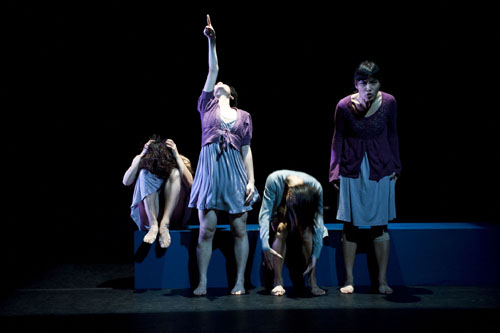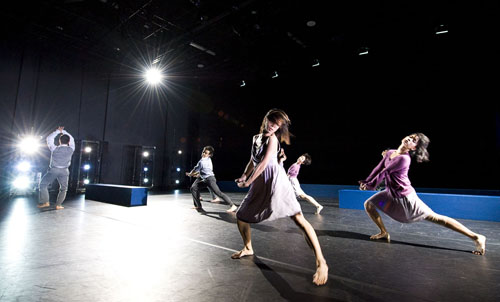The winner places his piece neatly on the chessboard, arresting his opponent’s king in defeat. The loser’s face collapses in resignation; cold sweat dots his forehead.
The worst is over. The anger will come later.
It’s this rage that Albert Tiong seizes and smashes in your face; a girl stands and mouths angry words and gesticulates violently, while the silence layers heavily on itself, with each succeeding layer heavier than the previous.
The audience shuffle in their seats.
Cages of lights, which line the sides of the theatre, throws a singular beam across, illuminating the right side of 4-seated people, casting the rest of their countenance in deep shadow.
Silence.
The tension suddenly shatters when a loud beat slams into the heightening silence, sending dancers into action and jolting the audience into their seats.
For the rest of the dance, it lapses into brief periods of false serenity, massive confusion, helplessness, and most often, anger. Tiong’s utilisation of various techniques creates a je ne sais quoi quality that adds to the gripping, almost-tangible realism of emotions.
For instance, mono-directional lights cast drawn-out shadows at the sides of the wall, while stark lights cut clean boxes around dancers, isolating them within. Chanting music plays during those uneasy moments of emotional plateaux, while the cello tightens agitation.
This is complemented by strong and graceful dance moves. Sometimes the dancers are placed within such an intimate distance, that it’ll prove disastrous should a dancer inadvertently make a careless mistake – very much like a mistake in chess. Other times, they are placed far from each other, with each dancing a different dissonant dance, clearly placing a yawning distance between them.
Instead of form-fitting clothes that are usually worn, the dancers wear everyday clothes–skirt, dress, shirt, vest and tailored pants.
Although Tiong did an excellent job in creating a highly charged atmosphere, he perhaps has sustained it for too long, with too little breaks in between. By bringing the audience through the convolutions of anger, sadness, loneliness, and resignation without letting them go, he stretches their emotions to sheer exhaustion; it was difficult to concentrate on certain parts of the dance.
By the time Checkmate ended (with a country song-like theme playing in the background), we were left with an echoing hollow feeling in our chests that only spirals deeper with the sad smile one dancer had.


